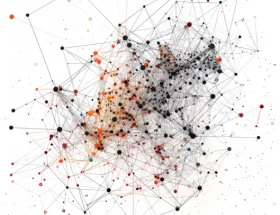The Wechsler Adult Intelligence Scale (WAIS), developed in 1955 by David Wechsler, introduced a broader and more dynamic approach to assessing cognitive abilities. Over the years, it has been refined through several editions, becoming one of the most widely used tools in psychological and neurocognitive evaluations. This post reviews its historical development, structure, and contributions to cognitive science.
Background
David Wechsler created the WAIS to address limitations in earlier intelligence tests, such as the Stanford-Binet. He envisioned a method of assessment that would reflect the complexity of human intelligence by separating verbal and performance abilities. The original WAIS divided tasks into subcategories, allowing for a detailed analysis of cognitive strengths and weaknesses. Subsequent editions have incorporated advancements in psychometric theory and research, keeping the test relevant to contemporary needs.
Key Insights
- Multi-Factor Approach: The WAIS-IV, the current version, organizes subtests into four indices: Verbal Comprehension, Perceptual Reasoning, Working Memory, and Processing Speed. This structure highlights specific cognitive abilities, providing a detailed view of individual performance.
- Applications Across Fields: The WAIS is widely used in clinical settings for diagnosing cognitive impairments, such as neurological disorders, and in research to examine cognitive development and aging.
- Continuous Adaptation: The test has evolved across its four editions to address cultural differences and incorporate findings from neuroscience, ensuring that it aligns with current research and societal needs.
Significance
The WAIS has influenced how intelligence is assessed by providing a detailed and flexible approach to understanding cognitive processes. Its role in clinical practice has improved diagnostic accuracy, while its use in research has expanded knowledge of brain function and cognitive abilities. Despite its success, the WAIS has faced critiques, such as concerns about cultural bias, which have driven meaningful revisions across its editions.
Future Directions
Future updates to the WAIS may include greater integration of digital testing methods and further efforts to enhance cultural inclusivity. Advances in neuroscience and artificial intelligence could also inform refinements, making the assessment even more precise and adaptable to diverse populations.
Conclusion
The WAIS has undergone substantial development since its introduction, incorporating new research and addressing feedback to maintain its relevance and effectiveness. Its multi-faceted approach to measuring intelligence continues to influence psychological practice and cognitive research, offering valuable insights into human abilities.
Reference
Jouve, X. (2023). Historical Developments and Scientific Evaluations of the Wechsler Adult Intelligence Scale (WAIS). Cogn-IQ Research Papers. https://pubscience.org/ps-1mT0L-8f8847-UTnu









